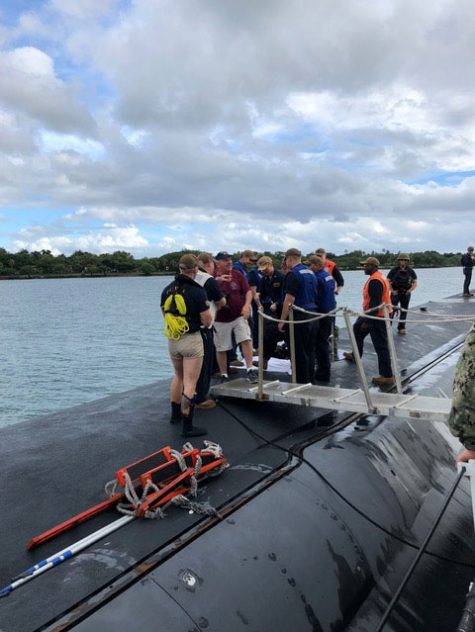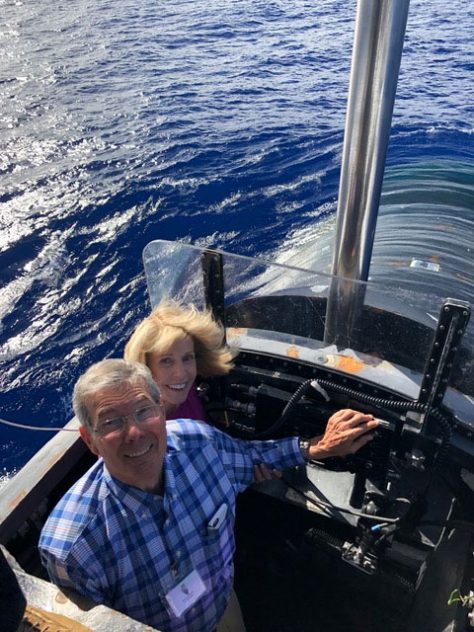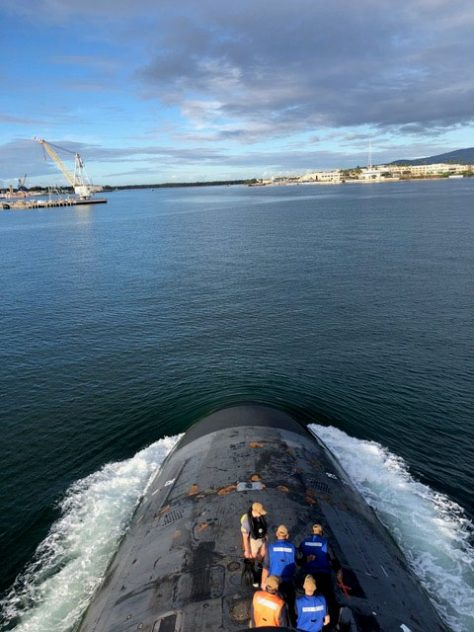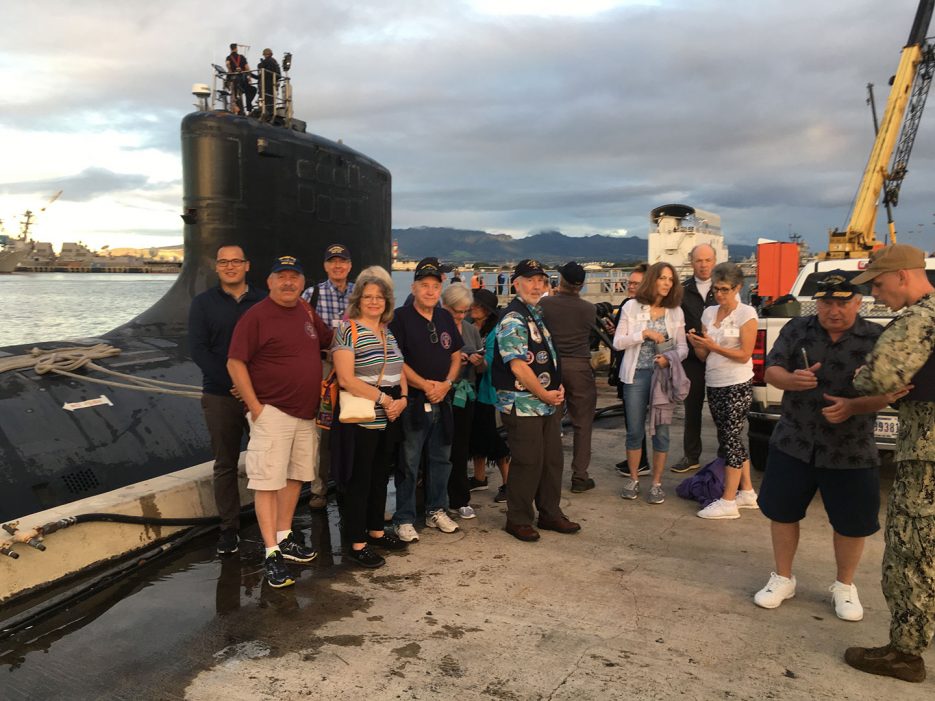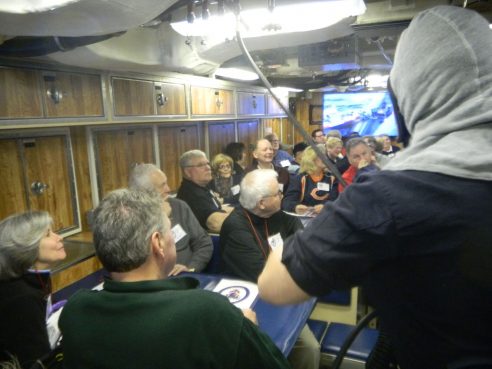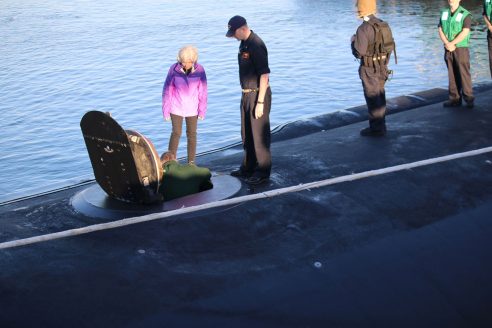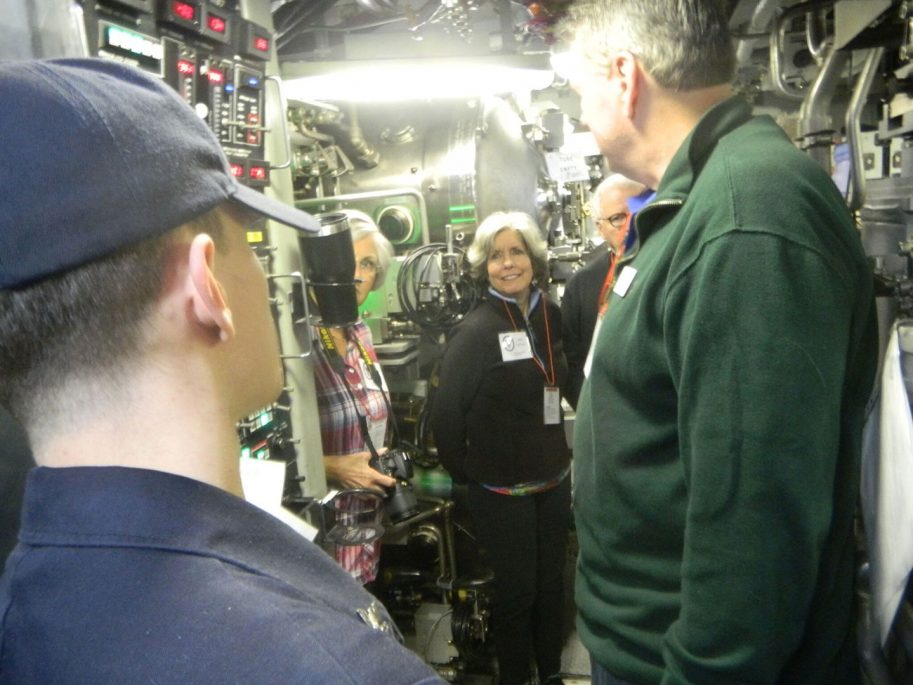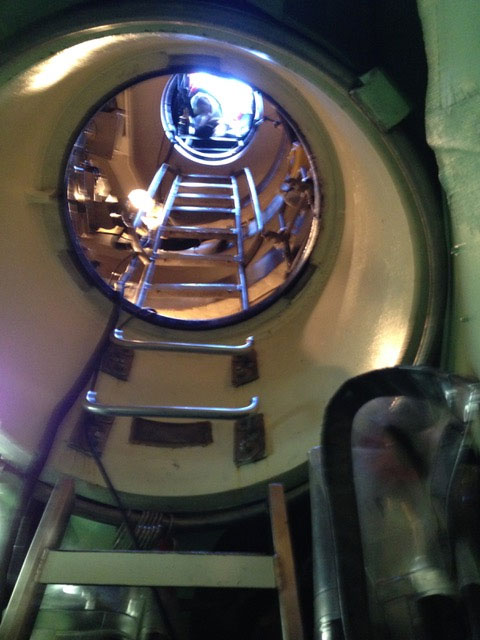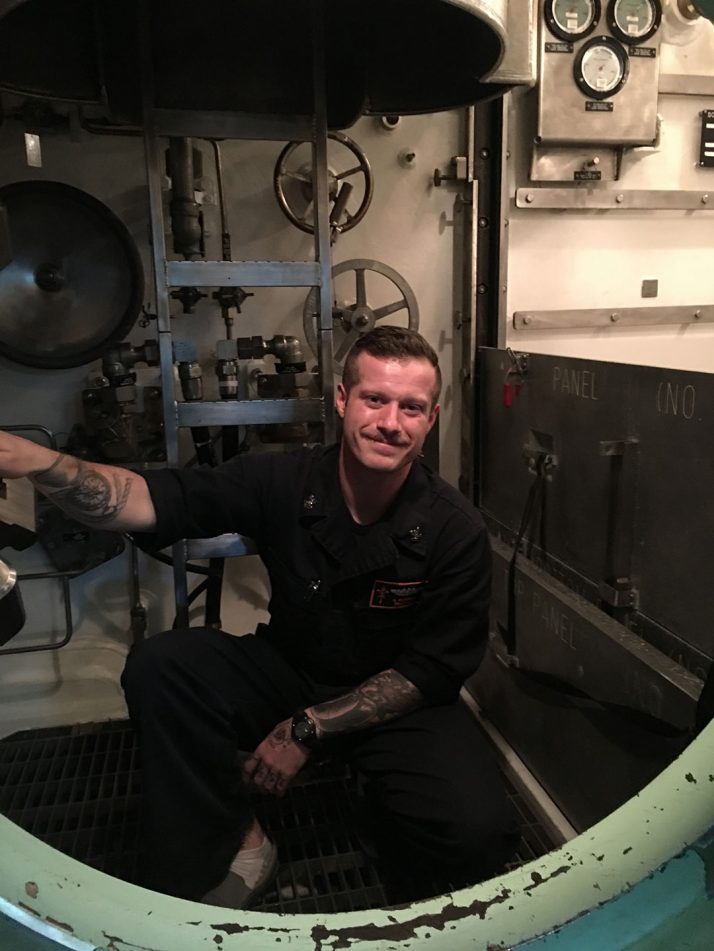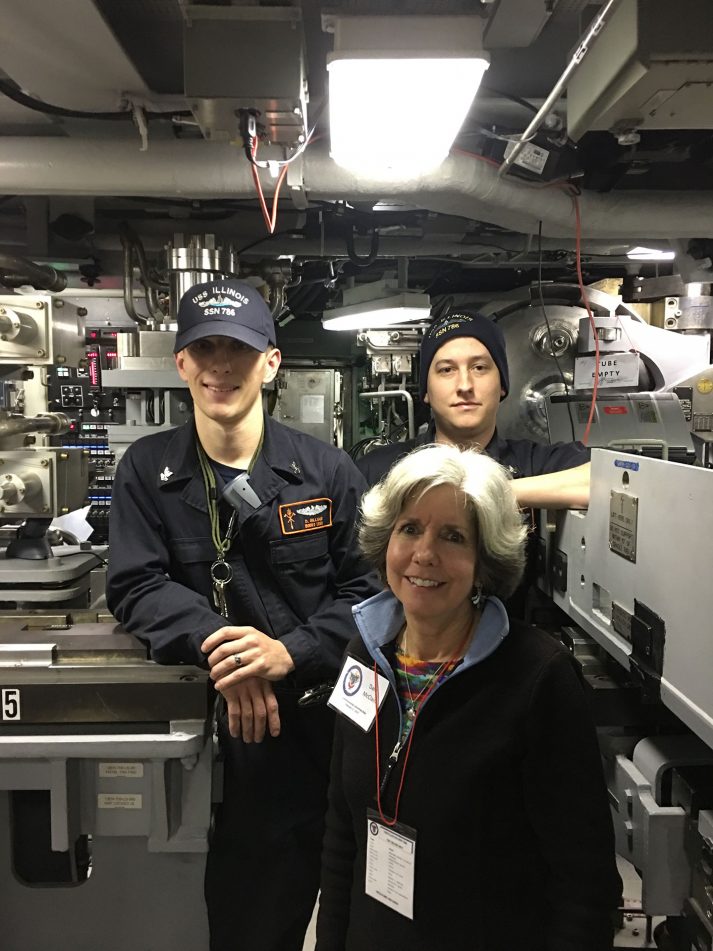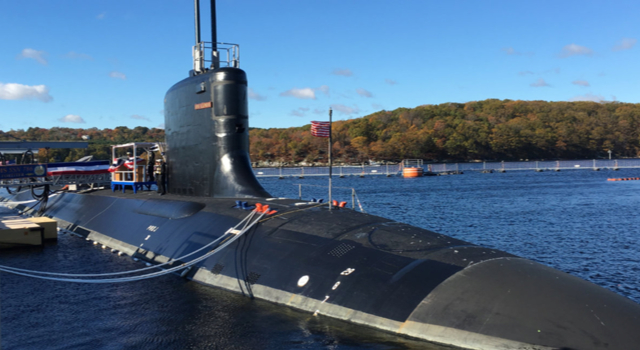From time to time the boat will take Club members “underway” for a day. This is a very special, once in a lifetime kind of experience. There is no regular schedule for this. We will know this is possible before we make plans for a visit but there is no guaranteed frequency for going underway. The boat is now fully operational and on regular deployments. Following a 6 month deployment the time in port is busy with maintenance and updates, as well as training and qualifying new crew members. Consequently, the boat is simply unavailable much of the time – which is as it should be. There is significant expense associated with taking a submarine to sea, but in spite of this, from time to time the crew and officers will show their appreciation for our support and take us to sea with them for a day. The USS ILLINOIS and 786 Club are both brand new and have only done one underway together. Experience from the 30 year relationship between the USS CHICAGO and the 721 Club indicates that an underway will occur, on average, every two or three years.
An underway starts first thing in the morning. We will either meet and board the boat at the pier, or, if she has been out the night before, from a tender at the mouth of the harbor. Once aboard, we’ll first receive a briefing on safety and proper conduct while on the boat. We will next form into smaller groups and crew members will give us a tour of various departments in the front half of the boat. The back half of the boat (the propulsion system) is classified and there is no tour or discussion of these departments.
The boat will be assigned a portion of ocean that it “owns” for the day. While cruising on the surface to this area there is normally time to climb to the top of the sail and be outside on top of the boat. From here you get a feel for the immense power of the vessel – it is exhilarating and awe inspiring!
When the assigned area is reached the boat will submerge. This is nothing like the WWII movies we’ve all seen on TV. It will take a good half hour to prepare to submerge. You will be able to watch the boat going underwater on the photonics display screens (the old periscope is gone). You’ll feel almost nothing, it is a gradual and controlled descent. The boat will go down to 150 feet and then be trimmed for underwater operation. We’ll spend the next 3 – 4 hours submerged and be treated to “Angles and Dangles”. We feel what it is like to dive and rise at 15 – 20 degree angles. The boat may make some banked turns. The boat will probably operate between 300 and 600 feet below the surface in water that will be 1,000 – 10,000 feet deep, and it will move at 6-12 knots through the water. This is just a fraction of the boat’s capability – performance limits are another subject which will not be discussed. While submerged we’ll eat lunch in the mess with the crew and talk with the sailors and officers about their various jobs. You’ll stand in the control room and observe the Officer of the Deck manage the boat. You’ll watch the pilots drive the boat, the navigator keep track of the boat’s position and the sonar operators monitor underwater and surface contacts.
Surfacing can take longer than submerging because the submarine must insure it is well clear of all surface vessels before coming up. Once rigged for operating on the surface and headed back to port there is usually more time to go up on top of the sail for those who didn’t get a chance earlier.
A few more expectation setting statements are in order. Once on board you will quickly understand that life on a submarine is a “young person’s game”. Getting into and out of the boat is a vertical climb. Onboard, moving between decks is accomplished on steep ladders. It is a narrow, 30 foot, vertical climb to the top of the sail. Passageways are narrow and ceiling height is limited in many places. While submerged there is no ambient pressure change and you’ll have little, if any sense of movement – it’s an agreeable environment. On the surface, the boat can roll a bit if there is a sea running and you’ll have little chance to see the horizon and feel fresh air on your face if you need those to settle your stomach. Medical clearance by your primary care physician is required and there may also be a brief security check before you’re cleared to go. Children must be 12 years or older to make a cruise.
This is a wonderful experience for many people. However, just because you make a visit to the crew at Pearl Harbor does not mean you must go underway. Some people know that this is not an experience for them, and instead they prefer to tour the boat while it is tied to the pier. This experience is available more often than going underway.
It should go without saying that going underway is only available to Club members in good standing. So far, we’ve not had the problem of exceeding the boat’s capacity to accommodate visitors. If that became a problem, those who had not been underway before would have priority over those who had already had the experience.

